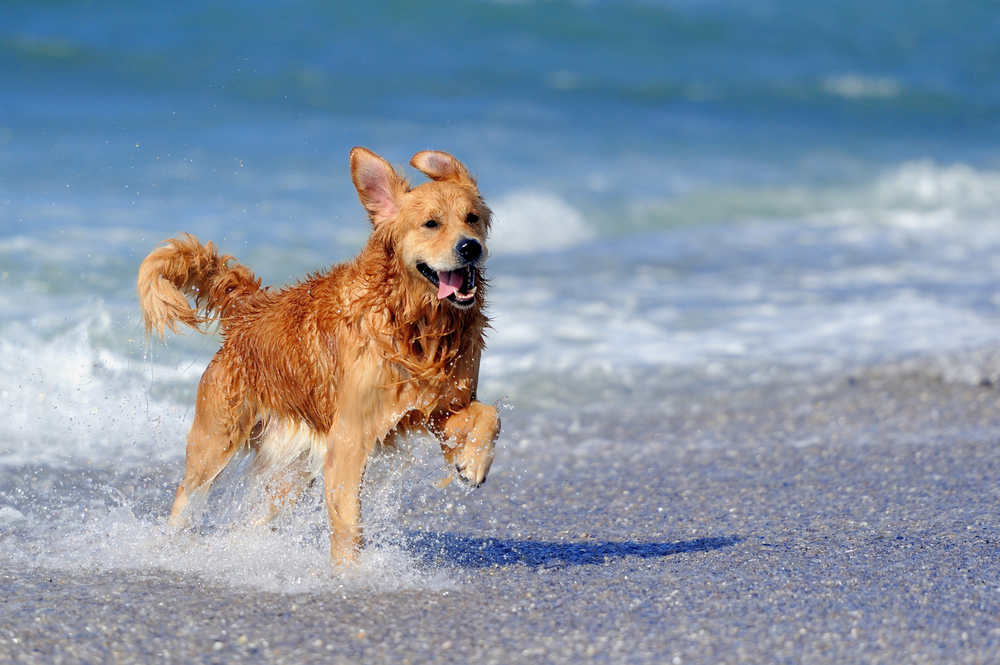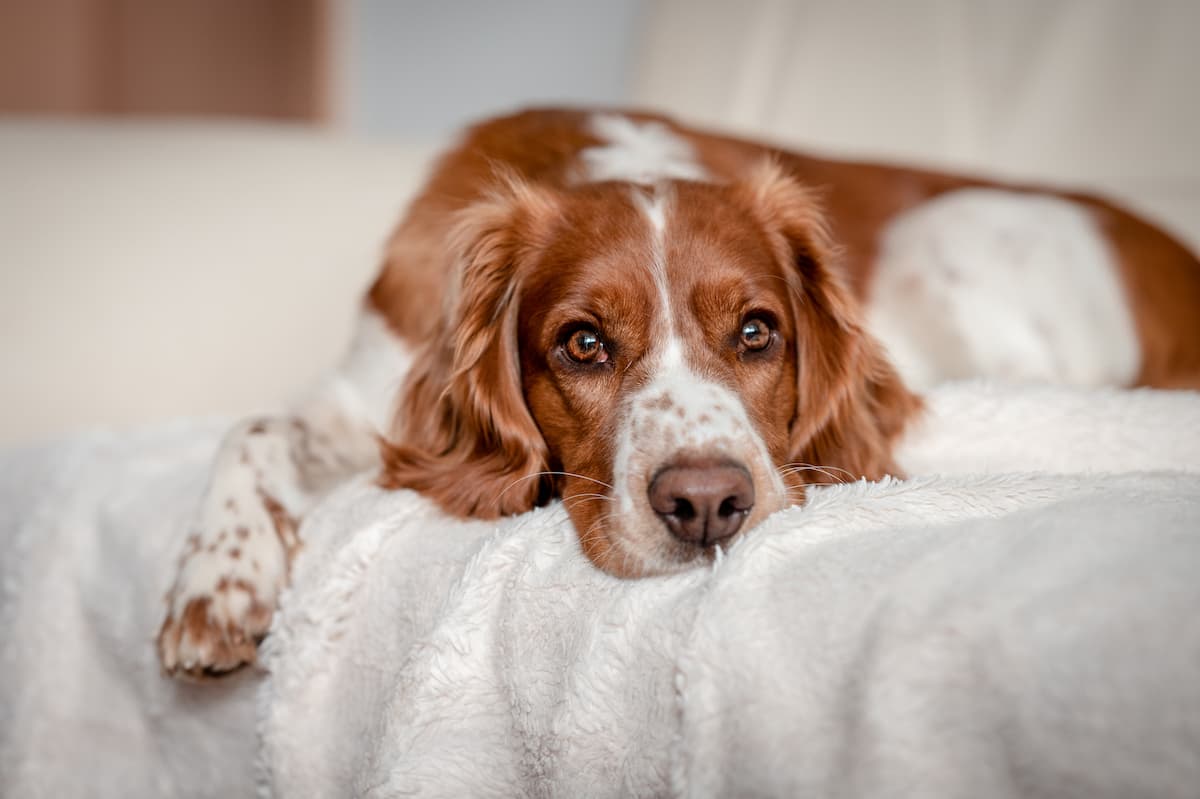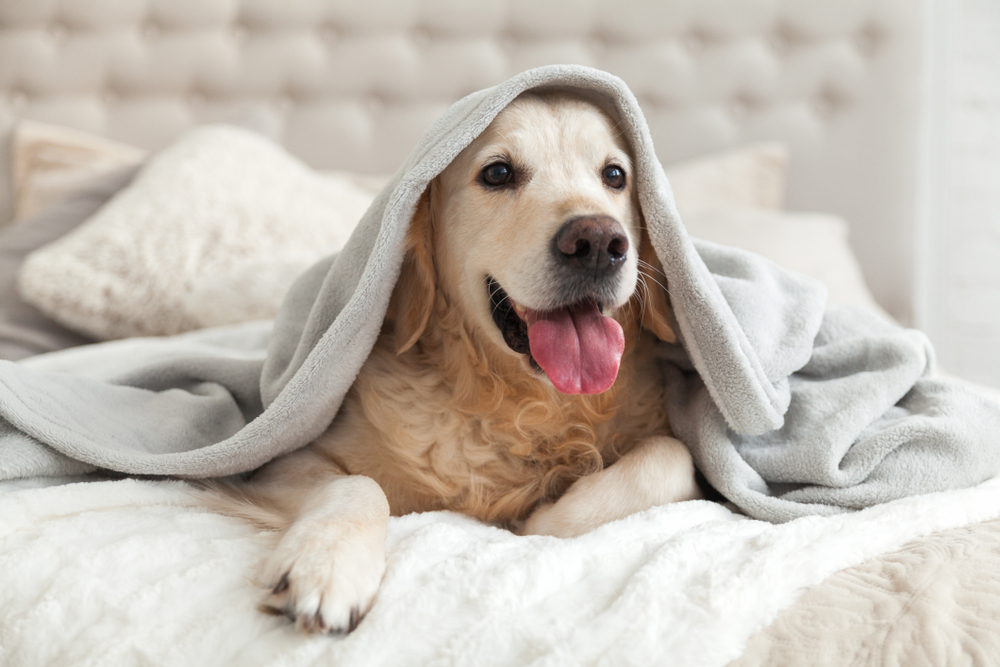The change of seasons can have a big impact on us humans, both positive and negative. Summer comes with ice cream and days by the pool, but it can also come with hay fever and heat waves. Winter brings the comfort of warm baths and cosy jumpers, but for some, it also means dry skin and high heating bills. But have you ever wondered how the change of seasons affects our four-legged friends?
Sure, they might get some ice-cold treats in summer and extra-long cuddles in winter, but do they experience things like hay fever and dry skin? Do they feel the extra humidity in the air during hot months?
As it turns out, our pups do indeed feel the shift in temperature and everything that comes with it. Here’s how it affects them.
 6 ways the change of seasons affects dogs
6 ways the change of seasons affects dogs
#1: Appetite
Whether it’s for comfort or simply to warm us up from the inside out, we humans tend to eat more in winter. Well, our furry friends aren’t all that different from us in that respect. Like many animals, dogs’ appetites increase in autumn and winter. It’s an evolutionary response to help them store as much body fat to keep them warm in the cooler months.
As a result, you may find them asking for more and more food during this period. As hard as it is to say no, it’s important to avoid overfeeding no matter what time of year. Instead, help them get the blood flowing with a walk around the neighbourhood. The odd treat from time to time is fine, but try to stick to their usual amount of healthy, high-quality dry dog food.
#2: Mood
You may have heard of seasonal affective disorder (SAD) – a type of depression that affects some people during darker, cooler months. But did you know that dogs can experience it too? According to a survey conducted by a UK veterinary charity, 40% of Dog Owners noticed a “considerable downturn” in their pooch’s mood during winter.
Treating SAD in dogs is pretty similar to treating it in humans. For one, ensure they get a healthy dose of vitamin D each day (a walk should do the job!). If it’s too cold or rainy outside for a walk, keep them physically and mentally stimulated with a bit of indoor playtime.
#3: Energy levels
We all know how big a toll extremely cold and extremely hot temperatures can have on our energy levels. Our pooches are no different. During cold months, with fewer hours of daylight to enjoy, our pups’ circadian rhythms (a.k.a. sleep schedules) can be thrown out of balance. This is because their bodies (and ours!) produce more melatonin (the hormone that makes us sleepy) in low-light conditions. Still, it’s important they get a daily walk to keep their energy levels
On the other hand, if your dog is experiencing lethargy during particularly hot weather, making them exert themselves by going for a walk can be dangerous. Instead, keep them inside where it’s cool and provide them with lots of drinking water.
#4: Allergies
The change of seasons can also impact our furry friends who are susceptible to allergies. Some pups may find themselves with dry, itchy skin in winter or irritating heat rash in summer. In either case, it’s essential to keep them hydrated, so top up that water bowl regularly. It’s also worth considering adding an omega-3 supplement (or other fatty acid) to protect the skin and reduce inflammation. Try not to bathe them too often, and stick to a hypoallergenic shampoo.
Hay fever can also be an issue for allergy-prone pups. The symptoms are pretty similar to the ones we experience – irritated eyes, runny nose, sneezing, and skin irritation. If you suspect your dog may suffer from hay fever, your vet should be able to provide you with eye drops or nasal spray to ease symptoms. In the meantime, try to keep your backyard’s grass cut short and wash their bedding regularly.
#5: Coat
With the change of seasons, many dogs also experience changes to their coat. Throughout autumn and spring, you may notice your pup shedding more than normal as they change from their summer coat to their winter coat and vice versa. They may also shed in winter simply because their fur is thicker.
Summer, however, is the sweet spot – the time of year that they experience the least shedding. That’s because they’ve already shed their winter coat and don’t yet need to let go of their thinner summer coat.
#6: Pain
If you have arthritis or joint problems, you probably notice the cold making those aches and pains worse in winter. Unfortunately, it’s the same for our four-legged family members. While the heat of summer can ease inflammation and alleviate their pain, chilly temps can worsen it.
To help reduce their pain, warmth is the name of the game. That knitted jumper isn’t just cute – it’s keeping them toasty and staving off those aches and pains. It also might be worth investing in a heated dog bed and some cosy blankets, or placing their current bed in an area with lots of sun. Try to prevent them from jumping up on couches or beds, instead giving them a lift if they need it. You could also research joint care supplements that can help alleviate pain and discomfort. If their pain isn’t helped by any of these suggestions, your vet may recommend an anti-inflammatory.
 Tips for helping your dog cope with the change of seasons
Tips for helping your dog cope with the change of seasons
Each season brings its own sets of perks and challenges, but there are a few things you can do to help ease the transition for your dog.
1. Keep them inside during extreme temperatures.
Heat waves and particularly chilly days can be dangerous to dogs, particularly if they’re left outside without any shelter.
2. Ensure they stay active.
Dogs need daily exercise regardless of the season, so if a walk isn’t possible due to a heatwave or storm, spend some time playing inside.
3. Keep on top of grooming.
Pooches need brushing all year ‘round, but don’t be afraid to bring in the big guns (a.k.a. professional pet groomers) to help them de-shed or get a heat-friendly summer cut.


1 comment
We have a two year old Beagle who has taken to chewing through electric cables. Apart from risking electrocution, it is an expensive habit. I’ve been told there is a spray with a name like No Chew that can be sprayed onto whatever the dog chooses to chew. It is very unpalatable apparently. Do you know of such a product?